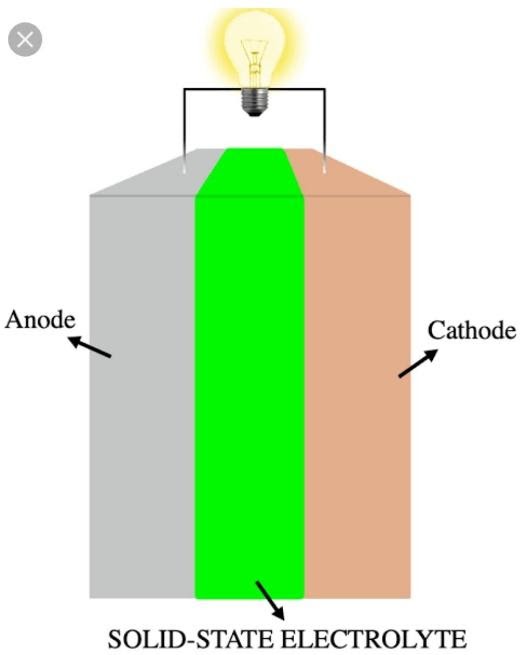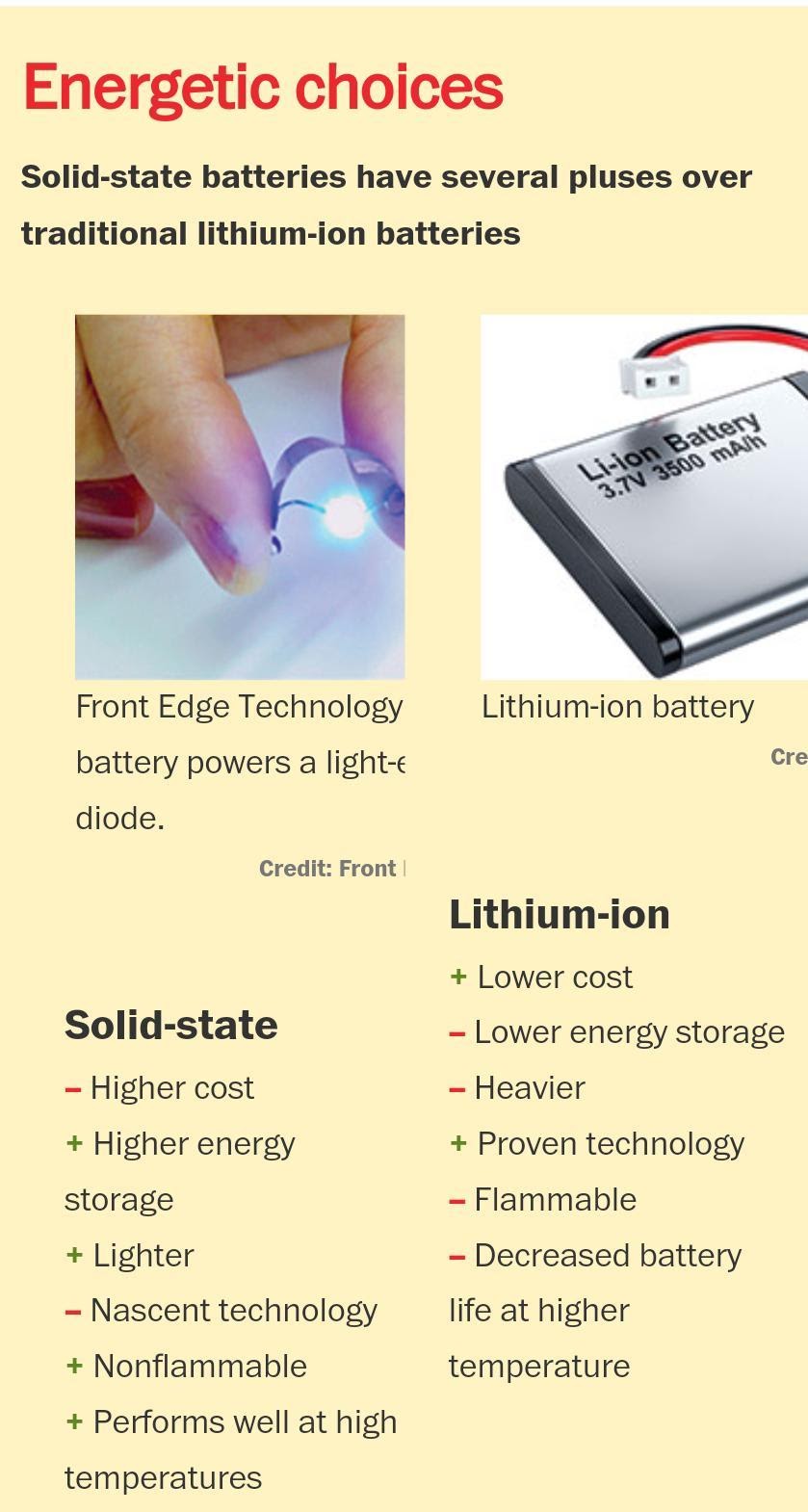Description

Disclaimer:Copyright infringement not intended.
Context
- Shareholders of California-based QuantumScape Corp, have approved a multibillion-dollar pay package for Chief Executive Officer Jagdeep Singh, subject to the company meeting some performance milestones.
About
- A solid-state battery is a battery technology that uses solid electrodes and a solid electrolyte, instead of the liquid or polymer gel electrolytes found in lithium-ion or lithium polymer batteries.
Background
- Between 1831 and 1834, Michael Faraday discovered the solid electrolytes silver sulfide and lead(II) fluoride, which laid the foundation for solid-state ionics.
- While solid electrolytes were first discovered in the 19th century, several drawbacks, such as low energy densities, have prevented widespread application.
- Developments in the late 20th and early 21st century have caused renewed interest in solid-state battery technologies, especially in the context of electric vehicles, starting in the 2010s.
Advantages of solid state batteries
- Solid-state batteries can provide potential solutions for many problems of liquid Li-ion battery, such as flammability, limited voltage, unstable solid-electrolyte interphase formation, poor cycling performance and strength.
- The advantages of the solid-state battery technology include:
- higher cell energy density (by eliminating the carbon anode),
- lower charge time (by eliminating the need to have lithium diffuse into the carbon particles in conventional lithium-ion cells),
- ability to undertake more charging cycles and thereby a longer life, and
- improved safety.

Materials used
- Materials proposed for use as solid electrolytes in solid-state batteries include ceramics (e.g., oxides, sulfides, phosphates), and solid polymers.
Uses
- Solid-state batteries have found use in pacemakers, RFID and wearable devices.
- Challenges
- They are potentially safer, with higher energy densities, but at a much higher cost.
- Challenges to widespread adoption include energy and power density, durability, material costs,sensitivity and stability.
Final Thought
- Solid-state batteries have numerous advantages over current batteries but many obstacles need to be overcome if they are to realise their full potential.
- Following this, we will see huge growth across various industries, not just electric vehicles and consumer electronics but also grid energy storage, medical devices and avionics
https://indianexpress.com/article/explained/explained-breakthrough-in-battery-tech-7700744/











